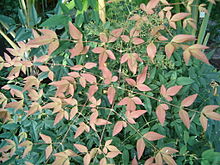Aporphine alkaloids
Corydin as a further representative of the aporphine alkaloids is found in Corydalis (larkspurs) Dicentra (heart flowers), and also in the horn poppy.
The aporphine alkaloids differ in their substituents and their position on the base structure.
[1] The method by which the central aporphine ring structure is constructed in nature is exemplified by the biosynthesis of bulbocarpin.
Cyclization results in a fourth six-membered ring, corytuberin 3, which then dehydrates to bulbocapnin 4.
It has been used to treat symptoms of Parkinson's disease because of its stimulating effect on dopamine receptors.





